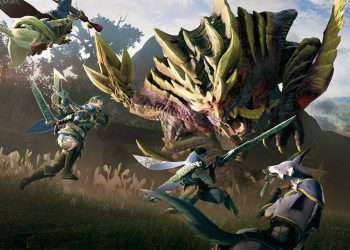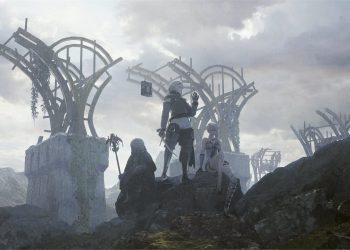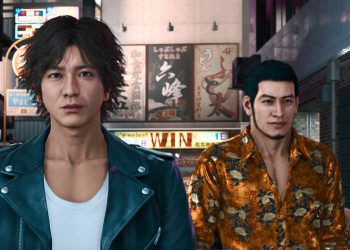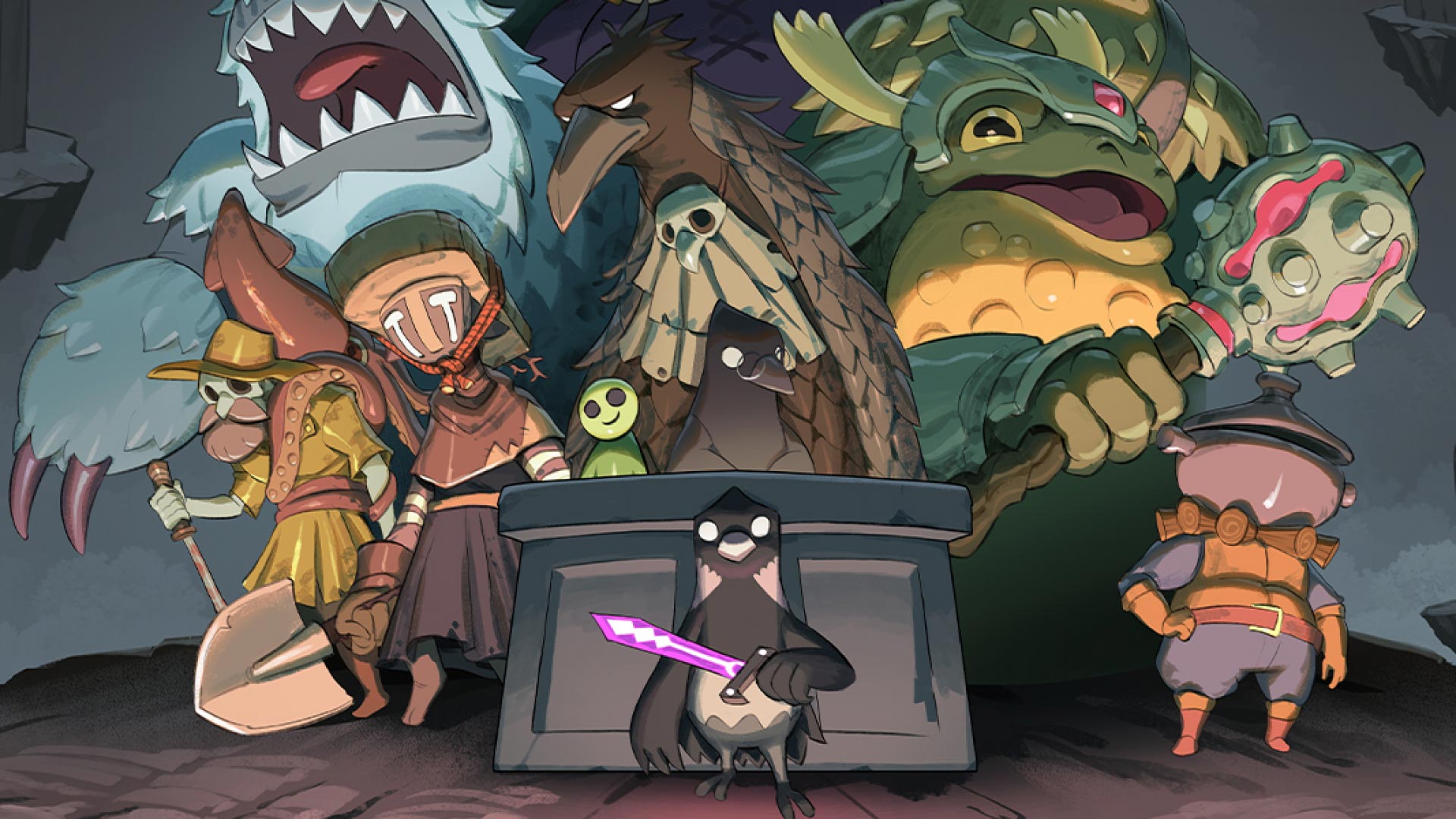
Death’s Door is an isometric action-adventure RPG produced by Acid Nerve who previously created the deceptively simple Titan Souls. While Titan Souls centered on more intimate one-on-one battles between the player and numerous bosses, Death’s Door steps in the ante with multiple weapons and powers, a beautiful yet decrepit world to understand more about, and colorfully tragic bosses. All of these elements combine to create a great experience that's unfortunately held back from being a timeless one by a number of key design choices.
Welcome To the Hall of Doors
In Death’s Door, you play like a (super cute) crow who is referred to as the Reaper although he is one of many. At the start of the storyline, the Reaper comes to a greyscale office world known as the Hall Of Doors, Reaping Commission Headquarters. After getting together with a few denizens of the hall, the little bird is given the job of reaping a huge soul. It’s explained that for every task provided to reapers, they open a door to the plane in which the soul exists and before the reaper returns with said soul, the door remains open. Not really a problem right? Unfortunately, as long as the doorway is open, the repear assigned the task will continue to age. More on that soon.
During your task, tragedy strikes, and the giant soul is whisked away meaning your door can't be closed. You’re now aging rapidly and can without doubt perish should you don’t retrieve the soul in time. While you find where the giant soul has gone, you encounter a vintage far larger crow who sits in front of the titular Death’s Door. Yep, there is an actual door hanging around named Death’s Door. The older crow explains the giant soul you seek has already passed through didn’t have enough soul energy to spread out it. He insists the Reaper go and defeat three other giant souls to open Death’s Door and finish his mission or face death.
Death’s Door’s narrative is told largely through text but delivered by its characters with increased life and enthusiasm than most AAA titles can muster. Whilst not voiced, NPCs will grunt, cheer, and moan because they supply the protagonist info on the world or simply let him know how much they love typing on the keyboard. Outside of Nintendo, not many developers can exude so much personality from their mostly silent characters and this was definitely a high point for that game. It had been often more exciting to encounter new NPCs to see how their eyes would bulge out than enter a brand new dungeon.
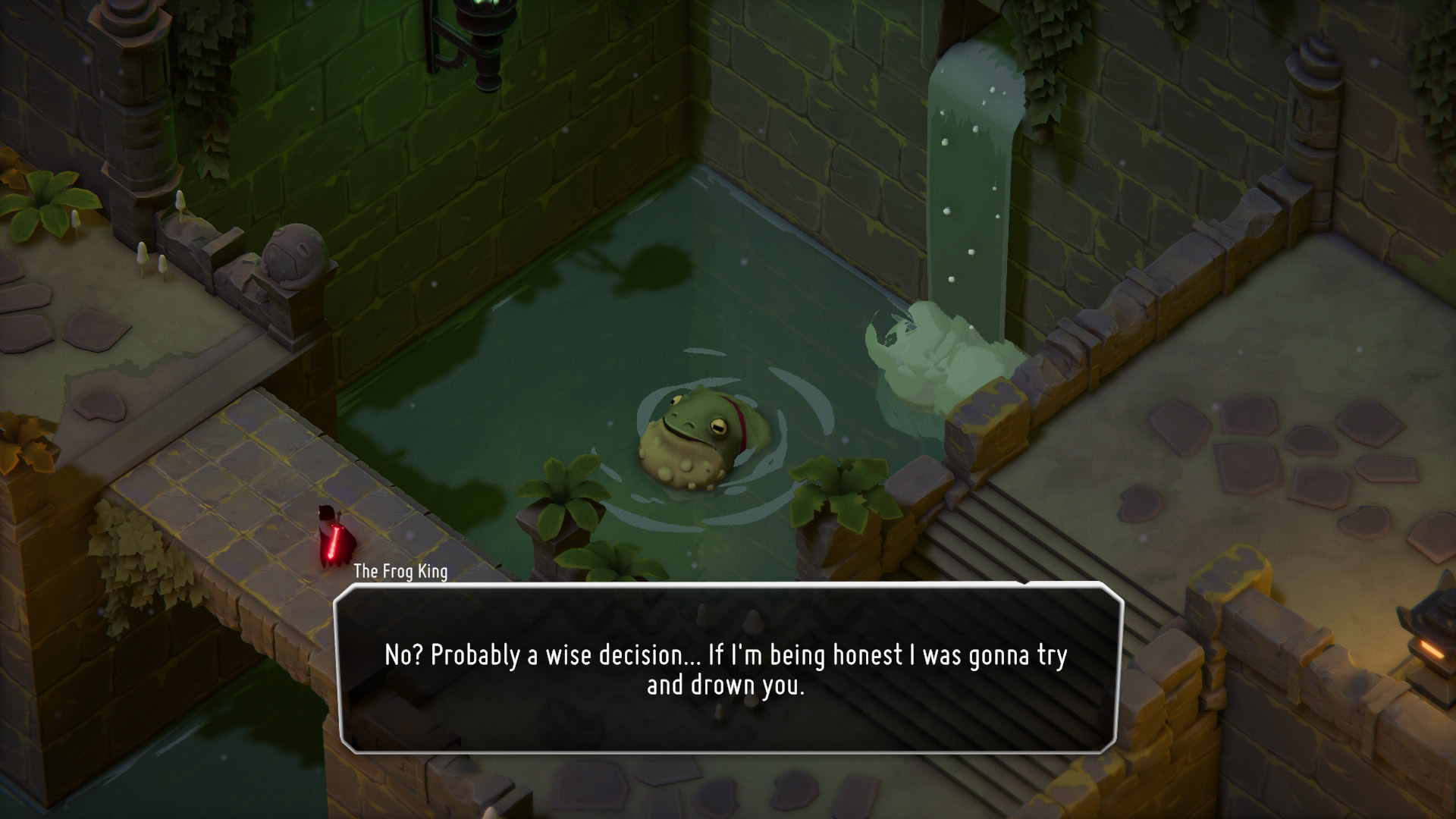
The narrative itself isn’t exactly groundbreaking but is delivered in a way that players will definitely find intriguing. The core themes throughout Death’s door, unless I’m reading too much in it, are the perils of immortality and also the dualism that exists in all of us, specifically for the game’s antagonists. Throughout each area and prior to the encounter with each big boss, it almost seems like you would be the antagonist. As you race through their dungeons killing minions, destroying vases, and overall doing “hero” stuff, the big boss of most areas can come and chime in in your actions. The very first major one, particularly, keeps asking if you’re the one that is destroying their house but never once attacks you before their encounter. However, the gamer is free to fight them each and every of these instances and also the bosses will run away, for the time being.
Showing the boss as only a person before you face them really adds to the concept of perhaps what you’re doing is not exactly right. While yes, the bosses do evil deeds and the people around them claim difficulties with their acts, the bosses themselves are proved to be less inclined to bloodshed until the Reaper pushes these to the purpose of no return. This dualism extends further as once you’ve slain the large boss of the area, the following cutscene (without spoiling an excessive amount of) reveals precisely why these were doing the things they used to do. While some would call that lazy storytelling, throughout the levels prior to these final encounters, you’re given breadcrumbs that may make you the same conclusion. The writers of the game have really mastered supplying sufficient information to satisfy players but still found a way to cause me to feel feel like an ass after slaying each boss inside the game.
A Beautiful Death Complete With Soundtrack
While the storyline is told along with some lighter touch given its extremely dark undertones, the presentation from the game has a clearly darker focus. Each character and animation is lovingly created and many possess a gimmick matching the area they are in. One character, for instance, has a literal soup pot for his or her head. Somehow he can still communicate and even offers the player to drink his soup which thankfully the Reaper rejects. I don’t know the anatomy of soup people but I’m let's assume that could have been his brain. Needless to say, I like the smoothness designs and each NPC looks great while somehow all fitting within the world of Death’s Door seamlessly.
The characters wouldn’t work with no great environment to live in. The main hub world, the Hall of Doors, is a hacked-together series of floating platforms with makeshift work areas and “offices” that seem disjointed where they're wide and time. The very first large area you are eligible to explore, outside of the hall, is a literal graveyard in which the dead walk and are colored with deep greys and darker blacks. If that’s this is not on theme, I don’t understand what is.
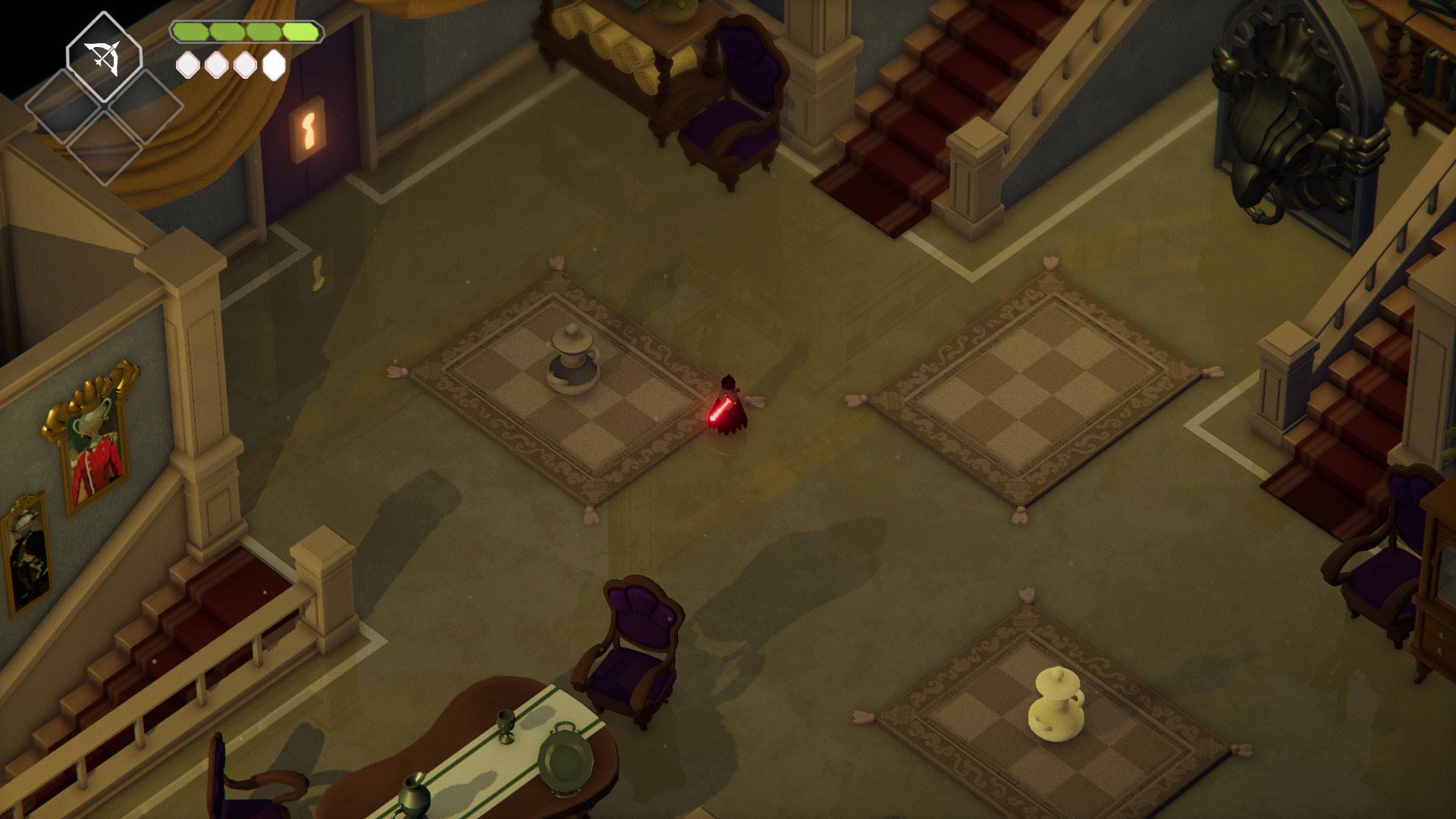
This look worked extremely well as I’d find myself awe-stricken because when dark and decrepit one part of the area was after which after i finally found a vista which was different, was shocked by its beauty. The designers play a lot with color within Death’s Door because the Hall side is greyscaled while you wander through, however the second you leave a door into one of the many areas, the world is quickly full of color giving a nice tonal vary from the drab, through the numbers, Reaping Commission.
While most of the areas are extremely interesting to look at, unfortunately, I discovered myself getting lost within a few sections because the colors have a tendency to be exactly the same. Within the jungle area, for instance, the color palette is mainly greens and browns. The citizens of 1 of the towns within the jungle area will also be light brown in color so that they blended right in and that i passed them several times because of their natural camouflage (or my failing eyesight). This was a small gripe only one that actually made it hard to navigate sometimes (more on that later).
When the soundtrack hits, it hits hard but at other times I found myself staving off yawns because of how calming some of the tracks might be. Throughout the game, you’ll hear music which will feature pan flutes, snares, and all sorts of instruments that mix together perfectly. The track currently playing will even change with respect to the situation you’re in such as a battle triggering. I found myself getting very hyped during boss battles when i weaved between doling out damage and dodging their attacks so it worked really well.
One extremely high point for the soundtrack occurs in the Furnace area. While you navigate el born area, you begin to activate pistons to proceed forward and the soundtrack fits it perfectly. As you continue deeper and deeper in, the piston and gears activated keep time using the track each and every smack of the piston adding a beat within the song. It had been a masterclass in how to enhance a gameplay experience using music and it was not lost on me.
Reaping Souls and becoming Lost
Combat and exploration are the primary elements of gameplay within Death’s Door.
Combat is what you’ll do for around 1 / 2 of your time through Death’s Door. The Reaper can wield a variety of weapons including their trusty primary sword, an electrified great hammer, and even a discarded umbrella. Each weapon includes a basic combo consisting of two to three hits in addition to a charge attack that takes a little time to do but hits a great deal harder. In addition to the primary weapon, right from the start of the game, the Reaper has a bow for a ranged weapon with further ranged weapons and magic being unlocked as you continue the adventure. To complete out its arsenal, the Reaper also offers a good dodge.

The combat in Death’s Door can be a bit challenging as encounters feel quite hectic as you encounter them, especially later in the game. During combat, you’ll have the ability to use your ranged weapon a certain number of times (base is four times) before you decide to have to recharge. To recharge you are able to hit an enemy together with your melee weapon which will gain magic back in a quick rate or even find glowing red objects or other things in the world which will recover your magic when struck. This dependency on melee attacks to recharge will prevent players from just spamming bosses with ranged attacks and instead force them into needing to find openings to hit enemies when they want to play primarily at range. I found this balance extremely satisfying and also the controls in battle, once you get used to them, ideal for this type of gameplay.
Throughout the game, the enemies you’ll face will pose a significant threat when you are limited to a very small pool of health. Starting out you’ll have four bars of health. This can be expanded by finding shrines around the world but I was barely capable of finding enough shrines to get as much as five health bars prior to the end of the game. Each enemy or boss hit will take off one bar of health meaning regardless of how far into the game you decide to go, enemies of all types will still wreck you if you’re not careful. You are able to recover health but only at green pots by planting seeds or by returning via a door towards the Hall of Doors. Going back through a door, however, also resets enemies so everything you killed comes back alive so you’ll have to fight the right path through them again. I found that simply continuing forward and playing more carefully until I found a green planting pot would be a better option.
You’ll encounter a flurry of enemies as time goes on with lots of having their very own gimmick and pattern to learn. One enemy I particularly liked was a guy having a stone mask on his back. He rolled around and could be dispatched in many various ways. You can break his stone mask making him vulnerable, let him roll into a wall striking him while he was stuck on his back, or play behind him striking him before he began rolling. Many of the more interesting enemies hanging around, particularly the bosses, share similar multi-layered approaches.
Death is a regular occurrence during gameplay because there are some enemies (I’m looking at you large bowman) who can time their attacks hitting you as soon as you get up. Effectively, several mistakes and you’re down for the count. Should you die in Death’s Door, you won’t lose any currency, your weapons, or anything like this – instead, you’ll lose progression. The doors that work as checkpoints are far and few between in order you push through the game, you’ll have long stretches of an area without any new door in order to save at so dying entails returning through all you just did. Fortunately, while you progress through areas, you need to do unlock shortcuts so everything becomes connected for any quicker return trip. Those walks of shame though are painful.
I will say though that most from the deaths I'd were not unfair. I either misunderstood an opponent mechanic or got bodied by a number of enemies. There is one gameplay quirk though that I felt attributed more to deaths than it must have. There’s iffy soft target locking hanging around so if you visit hit an object on the platform, the smoothness attacks having a forward slice and may fly quickly. One area I discovered tedious where I had several deaths I'd consider not because of player skill was at the furnace. You're put on a little bull-driven ride and also have to hit the head repeatedly to go forward. Since there is no locking with no rails around the ride, you can either go slow as balls or go too fast and inevitably fall to your death. This really is something that may be easily addressed through (produce some guardrails!) but hampers an otherwise tight control scheme and difficulty balance.
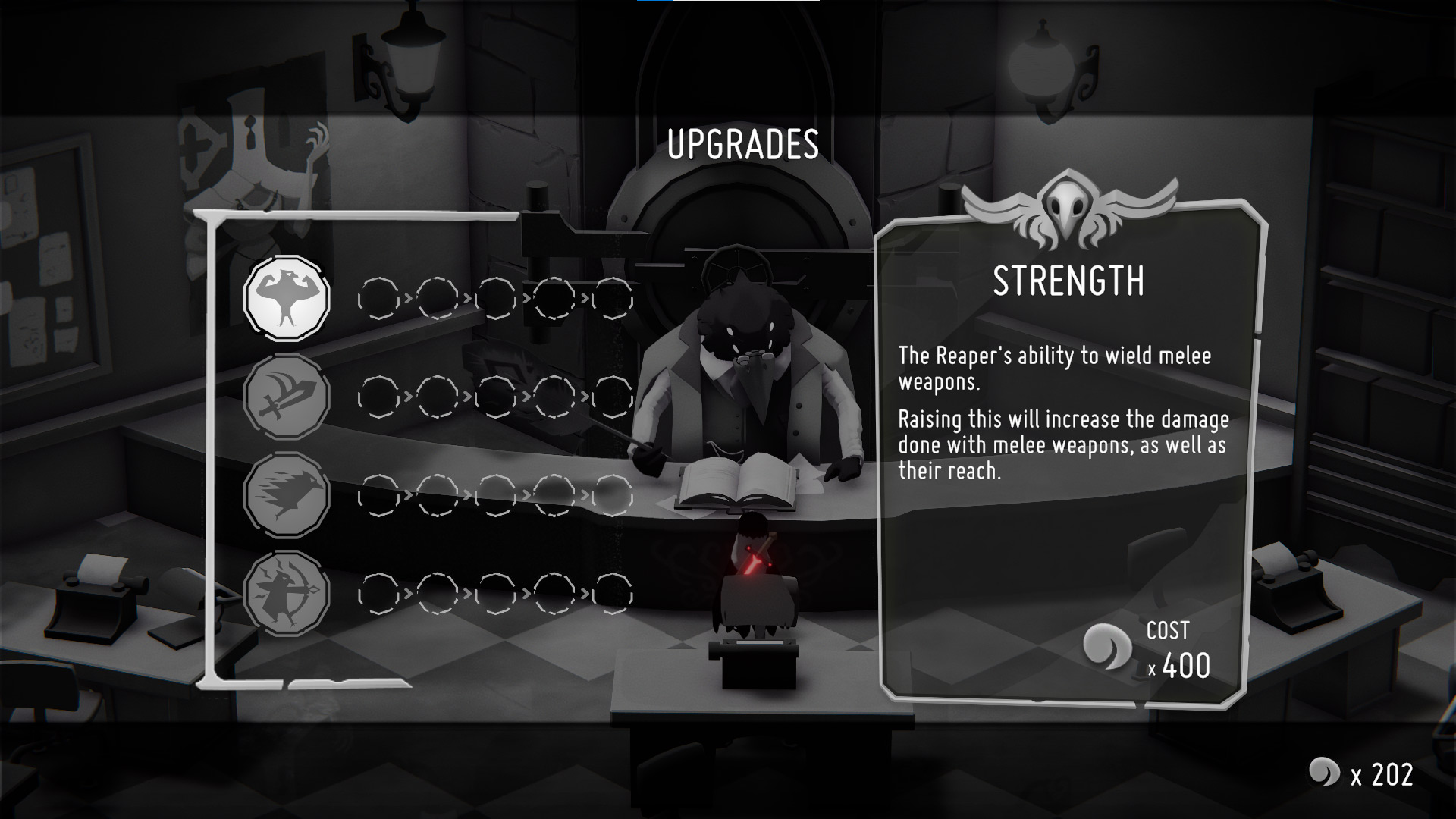
As you defeat enemies and explore the world, you’ll collect souls that will permit you to definitely enhance the Reaper’s abilities. There are four stats in total with every giving another boost to your little crow. For example, I went for Dexterity in early stages in the game because it supposedly increased the speed of regular attacks allowing you to chain them together quicker as well as the speed of charged melee and ranged attacks. Unfortunately, these increases felt negligible when i definitely shot faster and swung a little faster for normal attacks, but my charged melee attack never quite reached the point of feeling useful, even at four out of five upgrades. I'll state that I increased strength next which seemed to have a more substantial effect on combat so perhaps some stats just aren’t as effective as they could be.
The game rewards exploration with plenty of secrets and pickups to get in the future. Often, a dark shape around a large part can result in a ladder that spins the camera around and reveals your prize. Most of the shrines Used to do find were stashed in certain off-the-beaten-path. Now, there is no mini-map or map hanging around (within the build I played) meaning it’s your decision to determine what to do and somehow keep track of your surroundings. With that, we’ll go into a number of my frustrations with Death’s Door’s design.
There exist several dungeons within the game leading to some well-crafted and fun big boss fight. Actually, the large boss fights will likely be the primary draw for a lot of players. However, every dungeon I encountered had exactly the same objectives which made continuing the sport a bit of a trudge. Each dungeon asks you to get a hearty its innards and find four souls to unlock a door inside the dungeon. Once unlocked, it will lead you to a treasure chest of Avarice. These treasure chests test out your mettle with multiple waves of enemies and once you clear the banking center, you’re spat back out with a new power-up. This powerup will give you what you ought to get out of the dungeon and in to the big boss’ lair where you’ll fight your way through and finally fight the large boss. Then you will continue to the next dungeon and discover four souls, cope with the banking center, get an item, fight the right path through the big boss’ lair, and so on. Rinse. Wash. Repeat.
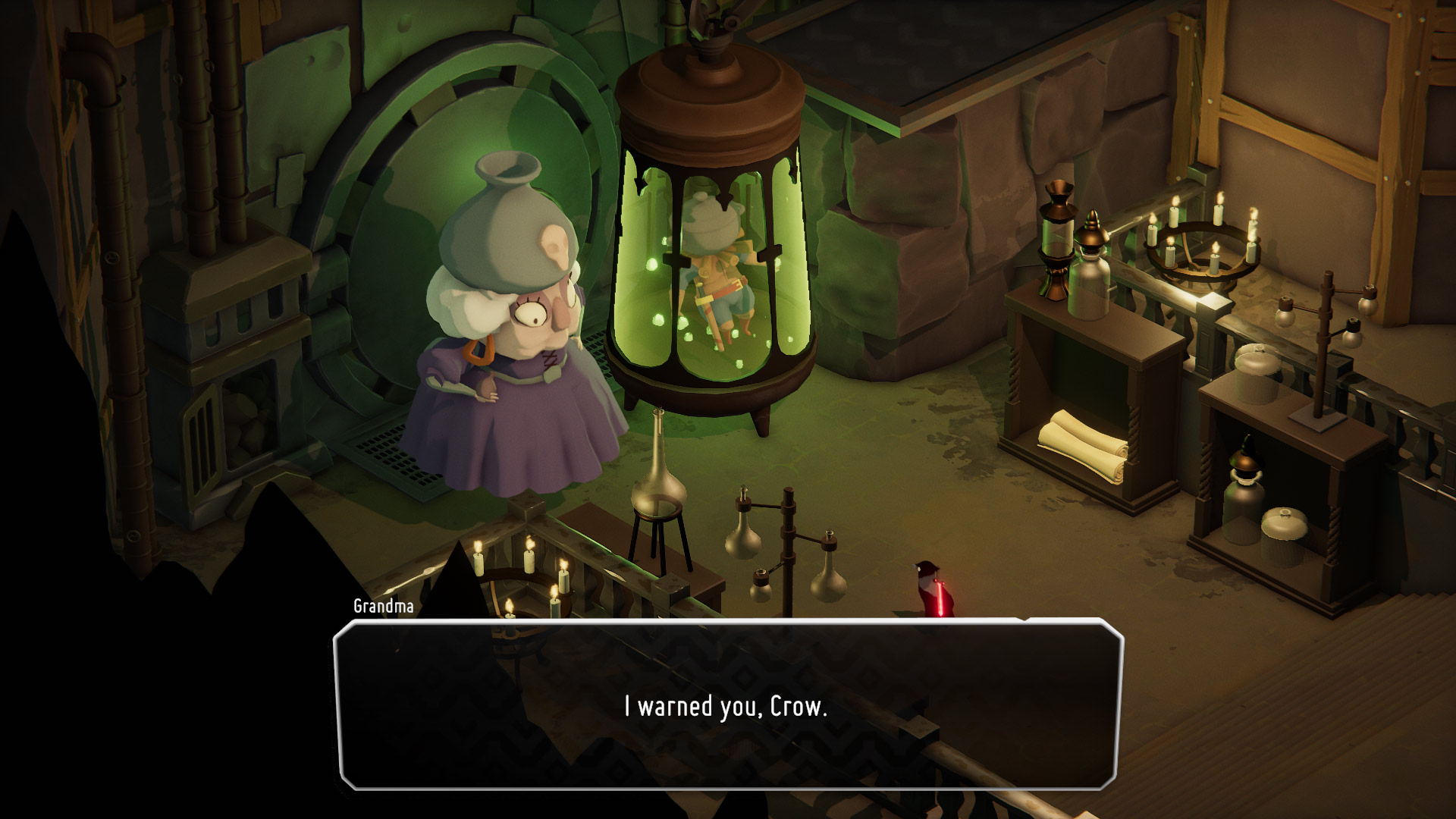
So what’s the issue with this when there is another title in the same genre that hasn’t changed its formula in decades? Well, that series that shall not be named does an excellent job of supplying the player more tools to play with as they explore through each dungeon. Rather than reward the gamer for clearing the dungeon after it’s already over (and you’re moving on to a new sub-area), it gives you the tool throughout the dungeon so you can learn to utilize it throughout and builds the dungeons for this. Death’s Door, however, does not captivate the player because they trudge through the monotony of another dungeon that is simply the previous one having a different coat of paint. This repetition is executed well, mind you, because of its well-crafted combat system and ingenious boss design, but knowing how every dungeon following the first is going to engage in is a bit disappointing.
My next major point of contention is circling to there being no map or guide points to help much navigate the planet. Yep, I get that it’s supposed to be as much as me to help keep tabs on all things in the game and “explore”. However, there are so many areas I probably missed within this game when i didn't have hint or reason to understand more about beyond things i thought was the road to the next dungeon or area. Using a map does cause players to use just the map to get around, but if completed in the right way can provide the incentive to explore those “undiscovered” areas into the spotlight and result in players seeing a lot of game world.
The above frustration really got exacerbated as I found myself getting lost numerous times because of everything looking exactly the same and NPCs proving not useful. Again, while vague answers from NPCs are fine and dandy, it comes with an inconsistency in the way the game delivers tips to the gamer. The grey crow I spoke about earlier gets control your camera to show explicitly exactly what the doors look like before you set off in your grand adventure. Later hanging around, someone opens a similar door for you personally and I wasn’t able to catch where it was (it was an area that looked like everything else within the area) and was hoping she’d show me again. When speaking to her though, she started NPC rambling and refused to exhibit me the doorway. I accepted this and located it myself but really was pissed off after i talked to the Grey crow again and he showed me the next door I ought to go to complete while taking over the camera again. If one NPC has camera control, simply make all of them do it. Without any major landmarks and the environments blending together, I’m sure many players will get lost until guides and maps are created through the community. That said, I found most of my play sessions would end because I was sick and tired of walking around in circles or was dreading mapping out and exploring new territory.
The Verdict
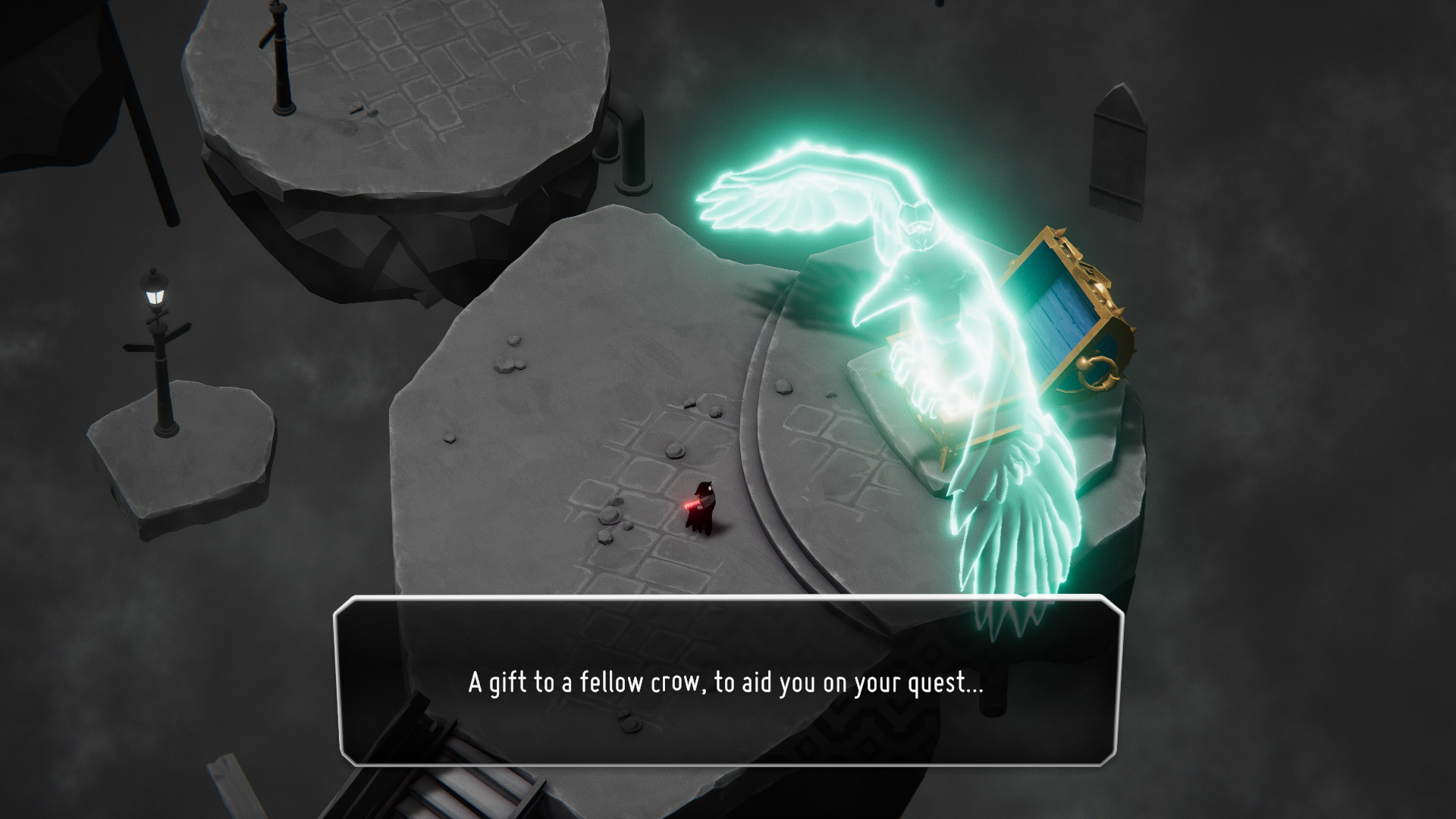
Death’s Door is a great action-adventure RPG full of fun characters, interesting themes, and finely tuned combat with some of the greatest boss battles I’ve seen in recent years. However, the developers appeared to be playing extremely safe with this genre. The choice to use crows instead of people would be a good artistic move but it’s odd that the crow’s kit didn’t include more avian inspiration to help drive this design choice home. The stat upgrades available definitely give a small push towards the Reaper but they are the standards in many RPGs with little originality put into them. The environments and dungeons, as i've already explained, used to be themed well but because of the zaniness from the hall side, I’d expect more variety from them on a presentation and gameplay level. Effectively, they developed something guaranteed to sell and review well, although not a game title that took risks in the design to actually stand out from other entries within the genre.
All in most, Acid Nerve did a great job with Death’s Door by pushing a little bit more while going for a few calculated risks, they would have an outstanding game rather than a very good one. Still a lot more than worth playing if you’re keen on the genre and aren’t looking for something revolutionary. There is also some post-game content which should add some additional run time to your enjoyment.



